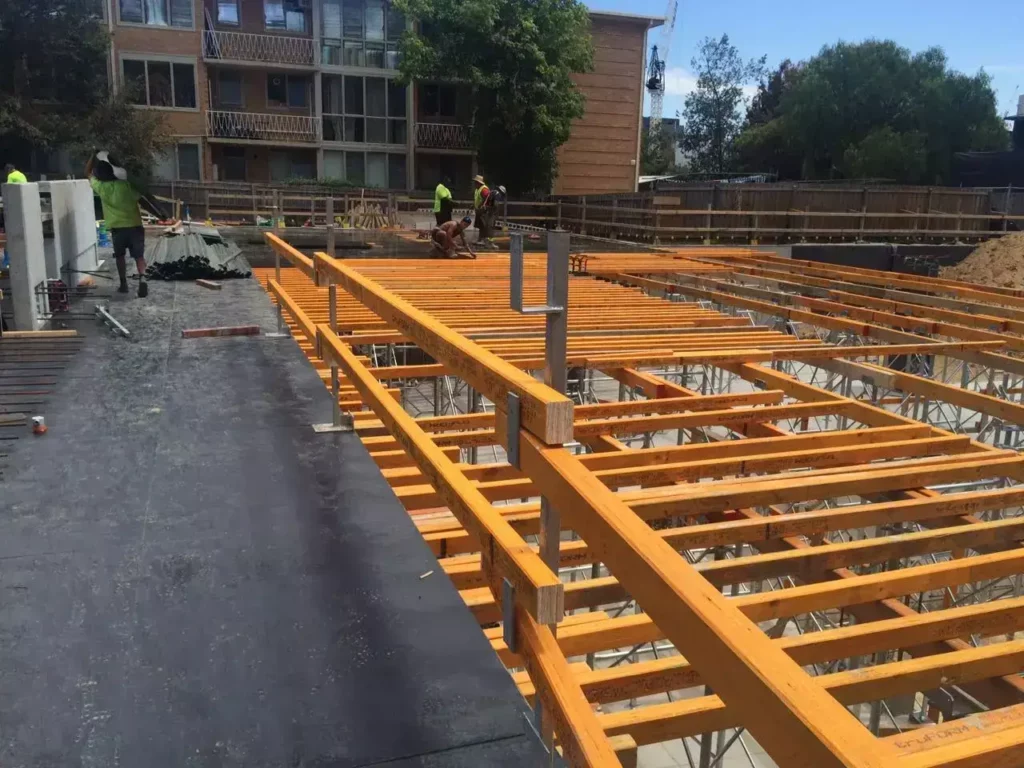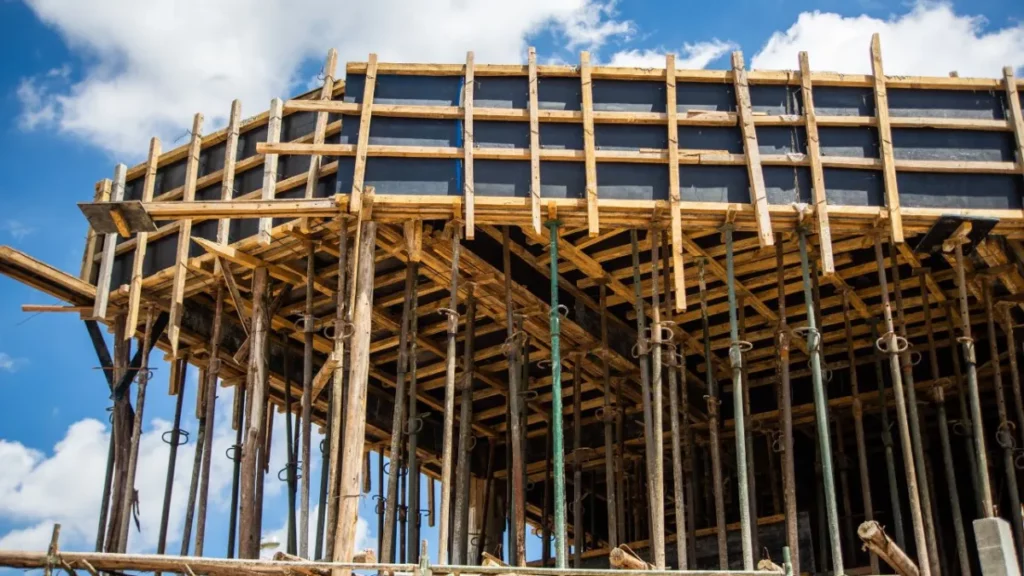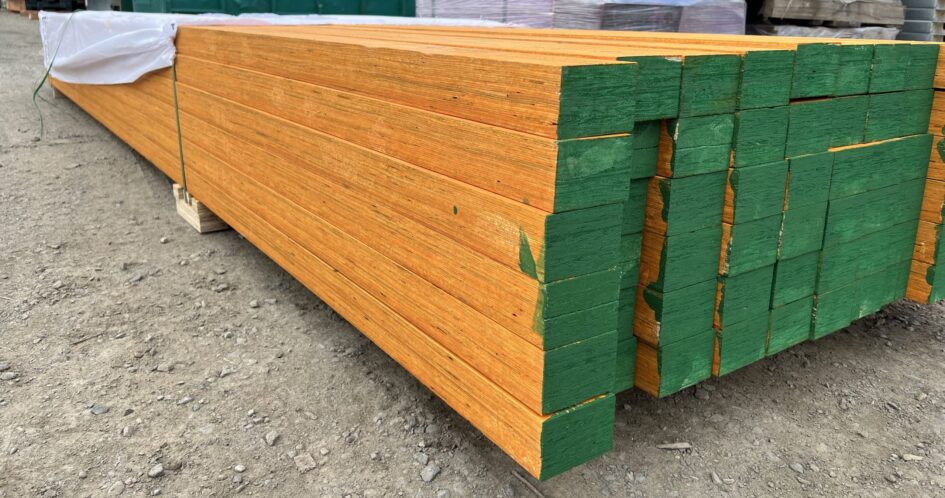F14 plywood is a crucial material in structural formwork applications. Understanding its key characteristics and production process is essential for ensuring the success and efficiency of construction projects. In this article, we will explore the advantages and limitations of using F14 plywood in formwork, compare it to other materials, examine its sustainability aspects, and discuss future trends in formwork applications.
Understanding F14 Plywood
F14 plywood is a high-quality, engineered wood product that is specifically designed for use in construction formwork. It is manufactured using layers of thin veneers of hardwood, which are bonded together with waterproof adhesive. This construction results in a strong and durable material that can withstand the rigors of concrete placement and form removal.
Key Characteristics of F14 Plywood
F14 plywood possesses several key characteristics that make it suitable for structural formwork applications. Firstly, it is moisture resistant, which ensures its stability and prevents warping or swelling when exposed to moisture during concrete pouring.
Secondly, F14 plywood has high strength and stiffness properties. This allows it to bear heavy loads and distribute the weight evenly across the formwork system.
Furthermore, F14 plywood is dimensionally stable, meaning it maintains its shape and size even under extreme conditions. This stability is crucial for achieving accurate and precise concrete formwork.

Production Process of F14 Plywood
The production process of F14 plywood involves several steps. It begins with the selection of hardwood veneers, which are then dried to reduce their moisture content. The veneers are carefully chosen for their quality and strength, ensuring that only the best materials are used in the manufacturing process.
Once the veneers are dried, they are layered and bonded together using a waterproof adhesive. This adhesive is specifically formulated to provide a strong and durable bond, ensuring that the plywood can withstand the demands of construction formwork.
After the layers are bonded, the assembled plywood is subjected to high pressure and temperature. This process, known as curing, further strengthens the bond between the layers and ensures the plywood’s structural integrity.
Once the curing process is complete, the plywood panels are meticulously sanded to create a smooth surface. This not only enhances the aesthetic appeal of the plywood but also ensures that it is free from any rough edges or imperfections that could affect its performance during formwork.
Finally, the plywood is cut into standard sizes for formwork applications. This precision cutting ensures that the plywood can be easily integrated into construction projects, saving time and effort for builders and contractors.
Throughout the production process, strict quality checks are conducted to ensure that the F14 plywood adheres to industry standards and specifications. This commitment to quality ensures that builders and contractors can rely on F14 plywood for their formwork needs, knowing that it will deliver exceptional performance and durability.
Read about concrete form plywood on: How to Select the Best Concrete Form Plywood for Your Project
F14 Plywood in Structural Formwork
When it comes to structural formwork applications, F14 plywood offers numerous advantages that make it a preferred choice for construction professionals.
F14 plywood, known for its exceptional strength and versatility, is a game-changer in the world of formwork. Its ability to seamlessly adapt to specific project requirements makes it a go-to material for construction professionals looking to create complex concrete structures with ease. With F14 plywood, the possibilities are endless.
Advantages of Using F14 Plywood in Formwork
Firstly, F14 plywood is highly versatile, allowing for seamless customization to meet specific project requirements. It can be easily cut, drilled, and formed into desired shapes to accommodate complex concrete structures. Whether it’s intricate curves or unique angles, F14 plywood can handle it all, providing construction professionals with the freedom to bring their creative visions to life.
Secondly, F14 plywood provides an excellent surface finish to concrete. Its smooth and consistent texture ensures a uniform appearance and minimizes the need for additional surface treatments. With F14 plywood, construction professionals can achieve a flawless finish, saving both time and money.
Additionally, F14 plywood has a high load-bearing capacity, enabling it to support heavy concrete loads without deformation or failure. This stability and strength contribute to the overall safety and durability of the formwork system. With F14 plywood, construction professionals can have peace of mind knowing that their structures are built to last.
Moreover, F14 plywood is cost-effective compared to other formwork materials. Its long lifespan and reusability make it a cost-efficient option for multiple construction projects. By choosing F14 plywood, construction professionals can maximize their investment and minimize their expenses, without compromising on quality.
Limitations and Considerations of F14 Plywood in Formwork
Although F14 plywood offers numerous benefits, there are a few limitations and considerations to keep in mind when using it in formwork applications.
Firstly, while F14 plywood is moisture resistant, it is not completely waterproof. It is important to protect the plywood from prolonged exposure to water or excessive moisture to prevent degradation and damage. Proper waterproofing measures should be taken to ensure the longevity of the formwork system.
Secondly, F14 plywood requires proper handling and storage to maintain its structural integrity. It should be stored in dry conditions and protected from direct sunlight and extreme temperatures. By taking the necessary precautions, construction professionals can ensure that their F14 plywood remains in optimal condition for future use.
Lastly, F14 plywood is susceptible to punctures and damage during formwork assembly or dismantling. Careful handling and adequate bracing are essential to prevent any potential weakening or failure of the formwork system. By following proper installation and dismantling procedures, construction professionals can safeguard the integrity of their structures.
Comparing F14 Plywood to Other Materials
In order to fully understand the benefits of using F14 plywood in formwork applications, it is important to compare it to alternative materials commonly used in the construction industry.
F14 Plywood vs. Traditional Wood
Compared to traditional wood, F14 plywood offers superior strength, stability, and durability. Its engineered construction minimizes the risks of warping, splitting, or shrinking that are often associated with traditional lumber. Find more about durability at https://www.engr.psu.edu/ce/courses/ce584/concrete/library/materials/aggregate/durability.htm
Additionally, F14 plywood is sourced from sustainable forests and manufactured using environmentally friendly processes. This makes it a more eco-conscious choice compared to traditional wood, which may contribute to deforestation and have a higher carbon footprint.
Furthermore, F14 plywood has a higher load-carrying capacity, allowing for the construction of larger and more complex concrete structures. Its consistent quality and dimensional stability eliminate the need for frequent replacements and repairs, resulting in cost savings and reduced waste.
F14 Plywood vs. Metal in Formwork
In comparison to metal formwork, F14 plywood offers several advantages. Firstly, plywood is lighter in weight, making it easier to handle and transport on-site. This significantly reduces labor costs and improves overall efficiency.
Secondly, F14 plywood provides better insulation properties than metal, minimizing the risk of thermal bridging and energy loss. It also mitigates the formation of condensation, ensuring a healthier and more comfortable construction environment. This is particularly beneficial in regions with extreme weather conditions.
Moreover, F14 plywood is highly versatile and can be easily cut and shaped to fit various formwork requirements. It allows for intricate designs and precise detailing, providing architects and contractors with greater design flexibility.
Lastly, F14 plywood is more cost-effective than metal formwork systems, especially for small to medium-sized projects. The initial investment in plywood is lower, and its reusability provides significant long-term savings. Additionally, plywood can be easily repaired and maintained, further reducing expenses over time.
Overall, when comparing F14 plywood to traditional wood and metal formwork, it becomes evident that plywood offers numerous advantages in terms of strength, durability, sustainability, insulation, versatility, and cost-effectiveness. These factors make F14 plywood an excellent choice for formwork applications in the construction industry.

Sustainability and F14 Plywood
In today’s construction industry, sustainability is a key consideration. F14 plywood offers several environmentally friendly aspects that align with sustainable construction practices.
When delving into the world of F14 plywood, it’s essential to understand the intricate processes that make it a sustainable choice. From the initial sourcing of hardwood veneers to the final product, every step is carefully crafted to minimize environmental impact and promote longevity. Click here to find more about environmental.
Environmental Impact of F14 Plywood Production
F14 plywood production involves the use of sustainably sourced hardwood veneers. Responsible forestry practices ensure the replanting and replenishment of harvested trees, minimizing the impact on natural ecosystems.
Moreover, the journey of F14 plywood from forest to construction site involves stringent quality control measures to guarantee that each sheet meets the highest standards of sustainability. This commitment to excellence extends beyond mere production, embodying a dedication to preserving our planet for future generations.
Furthermore, the manufacturing process of F14 plywood utilizes adhesives that have low volatile organic compound (VOC) emissions, reducing air pollution and promoting better indoor air quality.
F14 Plywood and Sustainable Construction Practices
F14 plywood’s durability and reusability contribute to waste reduction in the construction industry. Its long lifespan and ability to withstand multiple pour cycles minimize the need for frequent replacements and disposals.
Additionally, the use of F14 plywood in formwork allows for efficient concrete placement, reducing material waste. The smooth surface finish provided by plywood eliminates the need for additional surface treatments, further reducing environmental impact.
Embracing F14 plywood in construction projects not only signifies a commitment to sustainability but also a recognition of the intricate balance between human innovation and environmental stewardship. As the construction industry continues to evolve, F14 plywood stands as a beacon of sustainable progress, paving the way for a greener and more resilient future.
Future Trends in Formwork Applications
As technology continues to advance and construction practices evolve, the role of F14 plywood in formwork applications is expected to undergo changes.
Technological Advancements and F14 Plywood
Technological advancements in the manufacturing process are anticipated to further enhance the quality and performance of F14 plywood. Innovations such as improved adhesives and surface treatments may lead to even more durable and sustainable plywood options.
For instance, researchers are currently exploring the use of nanotechnology in plywood production. By incorporating nanoparticles into the adhesive, the strength and durability of F14 plywood can be significantly improved. This breakthrough could revolutionize the construction industry, allowing for the construction of taller and more complex structures with enhanced stability and longevity.
Predicted Changes in Formwork Material Use
In the future, there may be a shift towards more sustainable formwork materials, including alternatives to traditional wood and metal. However, F14 plywood is likely to remain a popular choice due to its proven track record, cost-effectiveness, and versatility.
One emerging trend in formwork material use is the adoption of bio-based composites. These materials, made from renewable resources such as bamboo or agricultural waste, offer a greener alternative to conventional plywood. They not only reduce the carbon footprint of construction projects but also provide comparable strength and performance to F14 plywood.
Furthermore, the rise of 3D printing technology has the potential to revolutionize formwork applications. By utilizing specialized printers and sustainable materials, construction professionals can create custom-made formwork components with intricate designs and precise specifications. This innovative approach not only reduces material waste but also allows for faster and more efficient construction processes.
In conclusion, F14 plywood is a crucial material in structural formwork applications. Its key characteristics, production process, and advantages make it an indispensable tool for construction professionals. By understanding its limitations and comparing it to alternative materials, we can make informed decisions when selecting the most suitable formwork solution. Furthermore, F14 plywood aligns with sustainable construction practices and is poised to embrace technological advancements in the future. Ultimately, recognizing the importance of F14 plywood in structural formwork applications leads to safer, more efficient, and sustainable construction projects.

Leave a Reply